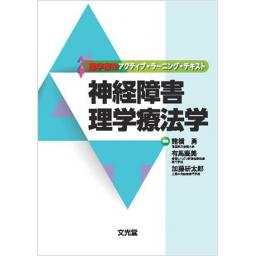1) Schmahmann JD, et al : The cerebellar cognitive affective syndrome. Brain 121 : 561-579, 1998
2) 吉尾雅春 : クリニカルニーズニングとは. 神経理学療法学, 第2版, 吉尾雅春ほか編, 医学書院, 東京, 381-388, 2018
3) 河島則天ほか : 歩行運動を実現する神経システム. 理学療法 29 : 727-734, 2012
4) 松井真 : 13. 神経・筋接合部疾患. わかりやすい内科学, 第3版, 井村裕夫ほか編, 文光堂, 東京, 811-816, 2008
5) 園田茂ほか : VII リハビリテーション 1-2 評価. 脳卒中治療ガイドライン 2015, 日本脳卒中学会脳卒中ガイドライン委員会編, 協和企画, 東京, 272-274, 2015
6) 園田茂ほか : VII リハビリテーション 1-3 予測. 脳卒中治療ガイドライン 2015, 日本脳卒中学会脳卒中ガイドライン委員会編, 協和企画, 東京, 275-276, 2015
7) 内山靖 : 症候障害学とは. 症候障害学序説, 文光堂, 東京, 11-17, 2006
8) 石田和人ほか : 脳の機能回復と神経可塑性. 理学療法学 40 (8) : 535-537, 2013
9) 内山靖 : 第1章 リハビリテーションにおける臨床判断学とは何か. 臨床判断学入門, 内山靖ほか編, 協同医書出版社, 東京, 3-7, 2006
10) Shumway-Cook Aほか : 正常な姿勢制御. モーターコントロール, 原著第4版, 田中 繁ほか監訳, 医歯薬出版, 東京, 163-198, 2013
11) Gibson JJ : 知覚システム. 生態学的知覚システム, 佐々木正人ほか監訳, 東京大学出版会, 東京, 35-55, 2011
12) 冨田昌夫 : 生態学的アプローチの発展と課題. PTジャーナル 40 : 1150-1151, 2006
13) 宮本省三 : 運動療法のパラダイム変換. リハビリテーション・ルネサンス, 春秋社, 東京, 51-83, 2006
14) 吉尾雅春 : 脳卒中に対する理学療法の歴史的変遷. PTジャーナル 39 : 669-673, 2005
15) Nudo RJ, et al : Neural substrates for the effects of rehabilitative training on motor recovery after ischemic infarct. Science 272 : 1791-1794, 1996
16) 諸橋勇 : 課題指向型アプローチに基づく歩行トレーニング. 理学療法 29 : 774-780, 2012
17) 日本理学療法士学会 : 理学療法診療ガイドライン 第1版 (2011), 日本理学療法士協会, 2011, http://jspt.japanpt.or.jp/guideline/1st/ (2019年4月2日閲覧)
